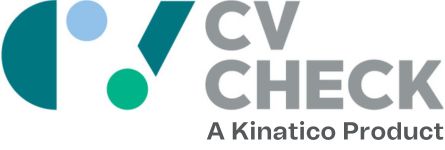In Australian workplaces, 68% of LGBTI workers are not comfortable coming ‘out’ to everyone with whom they work. That’s according to recent research conducted by the Diversity Council of Australia.
This alarming statistic is one and a half times higher than in the United States and twice as high as UK figures. This is not only a problem for Australian LGBTI employees, but also for employers – workplaces that foster a culture of inclusion are proven to be more productive.
Why non-inclusive cultures are bad for business
As the Diversity Council Australia study illustrates, LGBTI employees who conceal their sexuality or gender identity at work are twice as likely to feel down, and 45% less likely to be satisfied with their job, compared to colleagues whose sexuality or gender is known.
Similarly, a report published by Human Rights Campaign in the US reveals that 20% of lesbian, gay, bisexual and trans or gender diverse employees had stayed home from work simply because they felt unaccepted in their workplace as a member of the LGBTI community. Some said their inability to feel comfortable at work had even pushed them to search for new employment.
How coming out can increase work productivity
Creating an environment that makes LGBTI employees feel supported and included has a range of positive knock-on-effects for employers.
Employees who are out to their colleagues are more satisfied, enthusiastic and proud of their work than their closeted co-workers. They are also 50% as likely to innovate, 35% more likely to work highly effectively in their team, and 28% more likely to provide excellent customer/client service.
Why employees struggle to open up
LGBTI employees who struggle to come forward with their sexual orientation and gender identity most commonly fear workplace discrimination, social exclusion and job-loss.
And it seems the experience of coming out at work is not created equal for members of the LGBTI community. According to a Harvard Business Review study, 6% of lesbian, gay and bisexual employees are afraid of losing their job once their sexuality is known, while 32% of trans or gender diverse people fear the same consequence. 49% of trans and gender diverse workers try to keep their identity concealed compared to 13% of their lesbian, gay and bisexual colleagues.
Many individuals are outed against their will, while others – transgender workers in particular – are forced to come out because of HR processes – background checks, such as police checks for example, can reveal a transgender person’s gender history causing extreme anxiety and stress.
How to make your workplace more inclusive
Having a supportive leadership team is the first step to creating a more inclusive environment for LGBTI employees – 50% of people are more likely to be out to colleagues if they work under a management team that publically supports the community and its issues.
EY, Australia’s 2018 Employer of the Year for LGBTI inclusion, is determined to create an environment “where everyone can be comfortable bringing their whole selves to work”. Tony Johnson, CEO, EY Oceania, says this acknowledgement reflects the encouragement and reassurance their LGBTI people and allies receive from their supportive policies and practices.
Vodafone is also leading the way when it comes to creating inclusive workspaces. In 2017 UK-based charity Stonewall named it one of the world’s top employers for LGBTI individuals.
“As a large employer we believe we have a responsibility to take a lead on issues that are important to our staff and also to our customers,” said Antony Welton, HR Director of Vodafone New Zealand.
“We know we are at our best when our people are at their best and being an inclusive workplace is an important part of achieving that.”
Regardless the size or type of your organisation, there are other things an employer can do to encourage equality in the workplace:
- Strive to create an inclusive culture where all employees feel comfortable to be themselves
- Stand up against workplace bullying and harassment
- Encourage LGBTI employees to build their own workplace network
- Use inclusive language that does not assume all people re of the same sexual orientation
- Provide relevant training to other employees
- Treat complaints regarding discrimination seriously
- Ensure you have a clear privacy policy that ensures personal information collected by the company is stored securely and only viewed on a need-to-know basis
- Implement a policy that clearly outlines your organisation’s response to discriminatory comments and behaviour
- Hire people who fit the above culture and values and promote fairly




